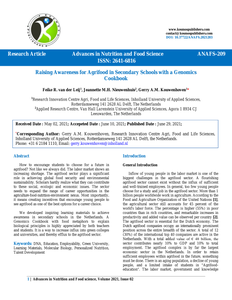Understanding taste is key for optimizing the palatability of seaweeds and other non-animal-based foods rich in protein. The lingual papillae in the mouth hold taste buds with taste receptors for the five gustatory taste qualities. Each taste bud contains three distinct cell types, of which Type II cells carry various G protein-coupled receptors that can detect sweet, bitter, or umami tastants, while type III cells detect sour, and likely salty stimuli. Upon ligand binding, receptor-linked intracellular heterotrimeric G proteins initiate a cascade of downstream events which activate the afferent nerve fibers for taste perception in the brain. The taste of amino acids depends on the hydrophobicity, size, charge, isoelectric point, chirality of the alpha carbon, and the functional groups on their side chains. The principal umami ingredient monosodium l-glutamate, broadly known as MSG, loses umami taste upon acetylation, esterification, or methylation, but is able to form flat configurations that bind well to the umami taste receptor. Ribonucleotides such as guanosine monophosphate and inosine monophosphate strongly enhance umami taste when l-glutamate is present. Ribonucleotides bind to the outer section of the venus flytrap domain of the receptor dimer and stabilize the closed conformation. Concentrations of glutamate, aspartate, arginate, and other compounds in food products may enhance saltiness and overall flavor. Umami ingredients may help to reduce the consumption of salts and fats in the general population and increase food consumption in the elderly.
MULTIFILE

There is a need to assess communication in daily life situations for people with speech and language disorders. Although language proficiency and communication in daily life are correlated, their relationship is far from linear or straightforward. This paper aims to demonstrate the usefulness of the construct of communicative participation by unravelling the relationship and overlap between participation and communication. We explored the relationship between communication, participation, and communicative participation by reviewing common definitions mentioned in the literature. Next, we evaluated to what extent communication plays a role in each of the World Health Organization’s International Classification of Functioning (ICF) “Activity and Participation” chapters by counting how many items in each chapter should be considered for describing communicative participation.
MULTIFILE
How to encourage students to choose for a future in agrifood? Not like we always did. The labor market shows an increasing shortage. The agrifood sector plays a significant role in achieving global food security and environmental sustainability. Scholars hardly realize what they can contribute to these social, ecologic and economic issues. The sector needs to expand the range of career opportunities in the agriculture-food-nutrition-environment nexus. Most importantly, it means creating incentives that encourage young people to see agrifood as one of the best options for a career choice. We developed inspiring learning materials to achieve awareness in secondary schools in the Netherlands. A Genomics Cookbook with food metaphors to explain biological principles is highly appreciated by both teachers and students. It is a way to increase influx into green colleges and universities, and thereby efflux to the agrifood sector.
MULTIFILE
